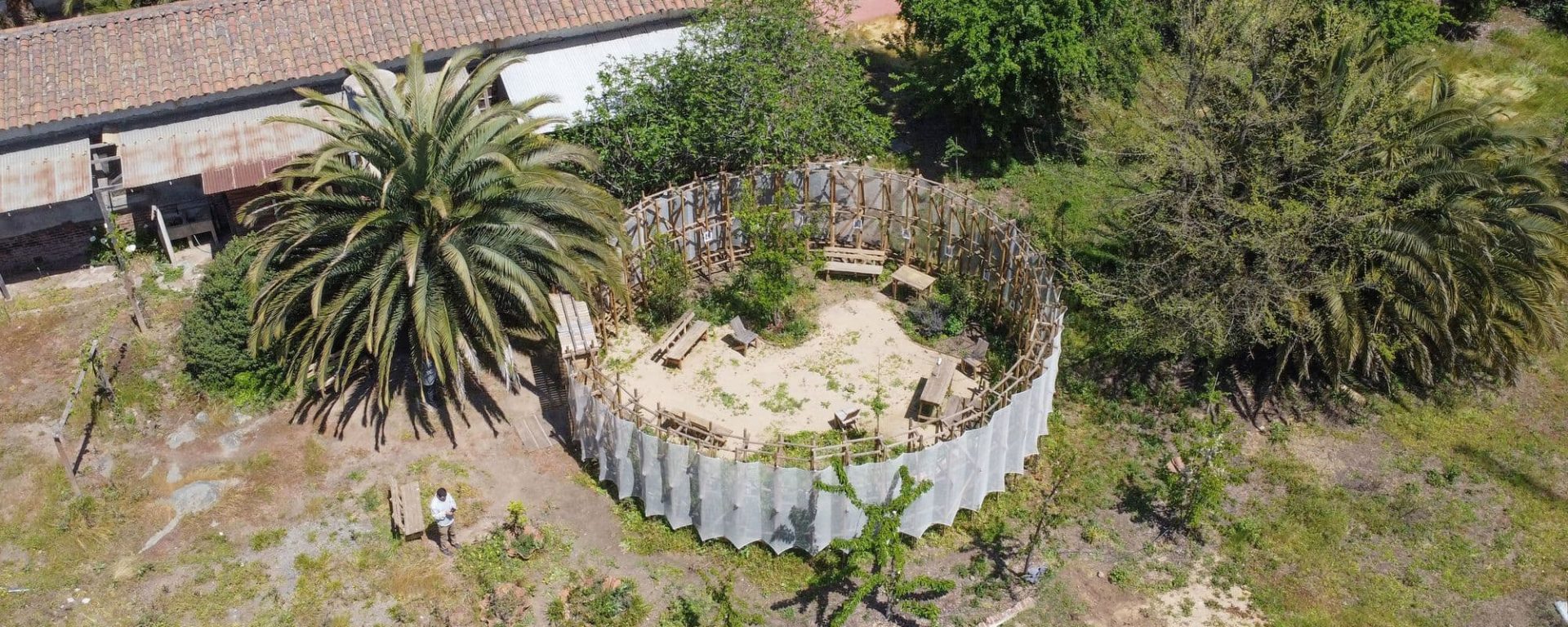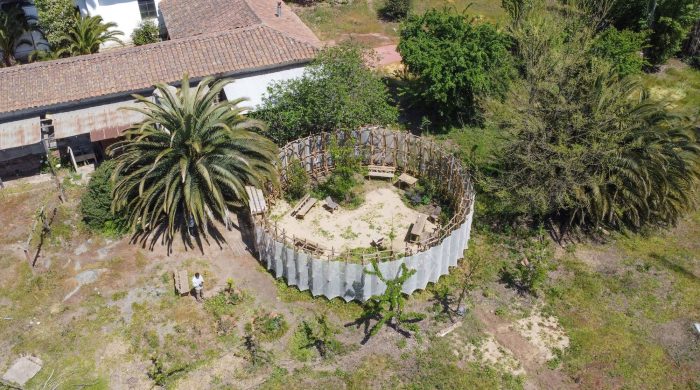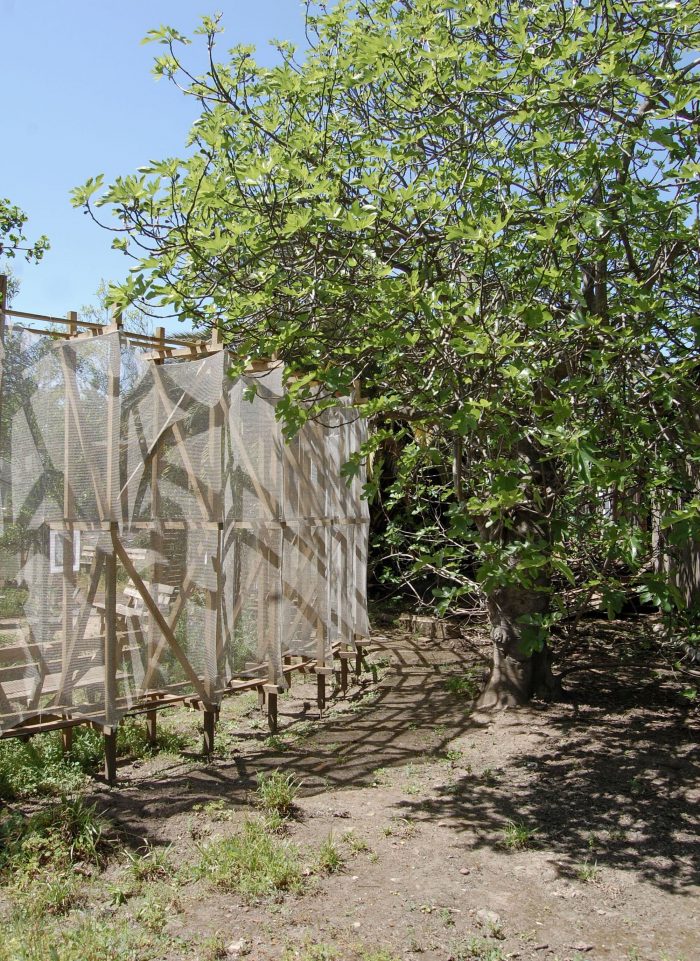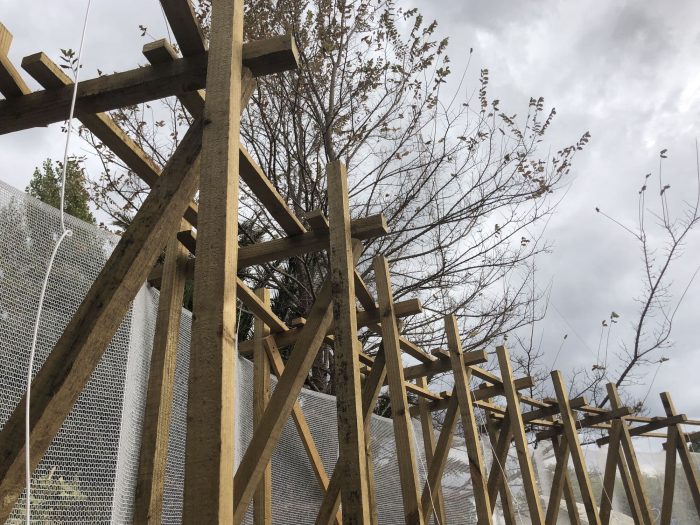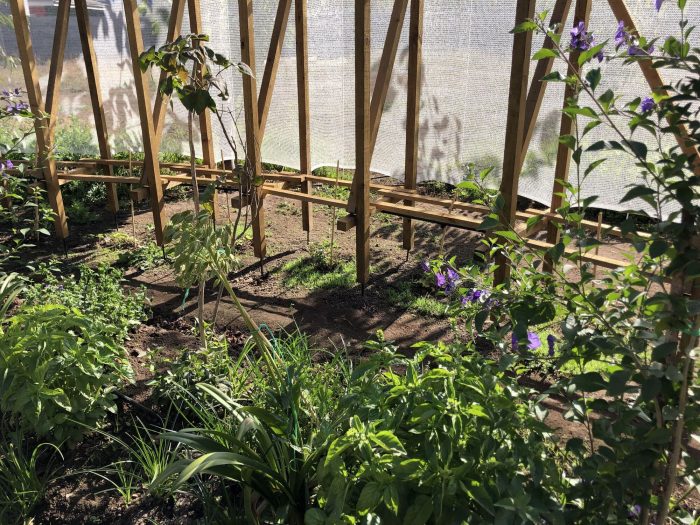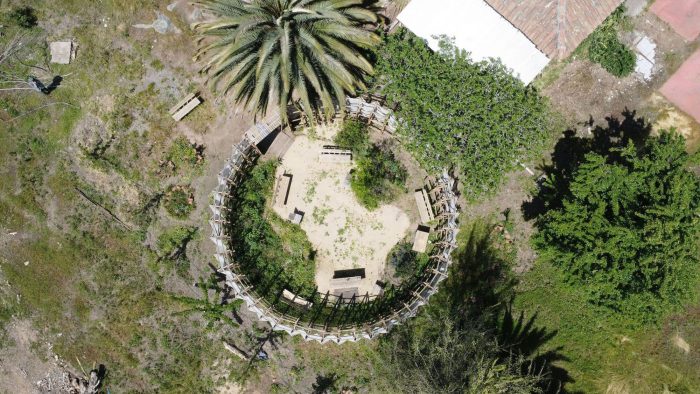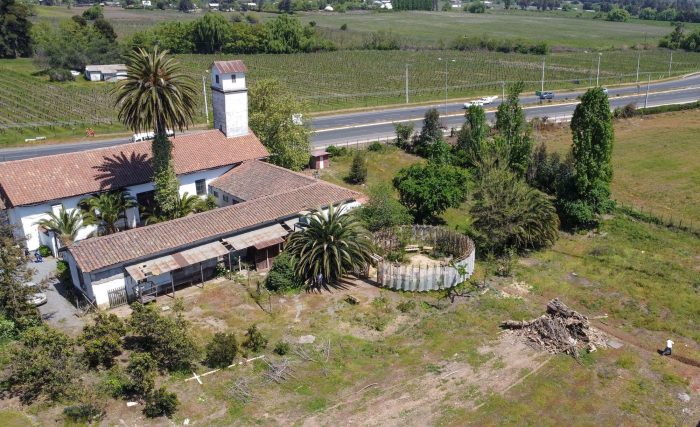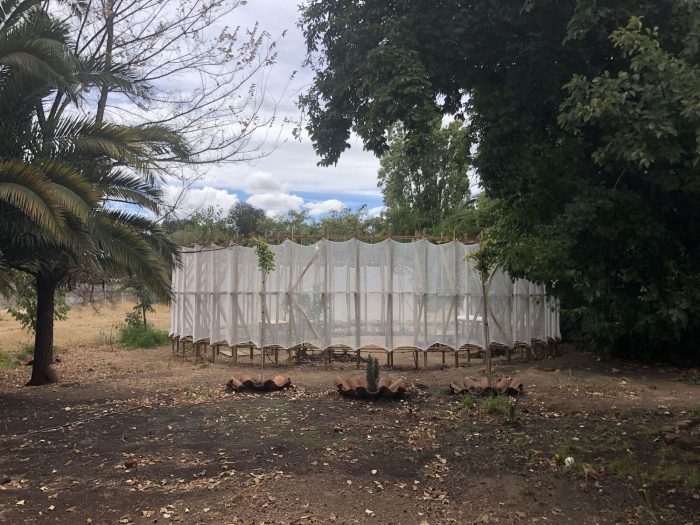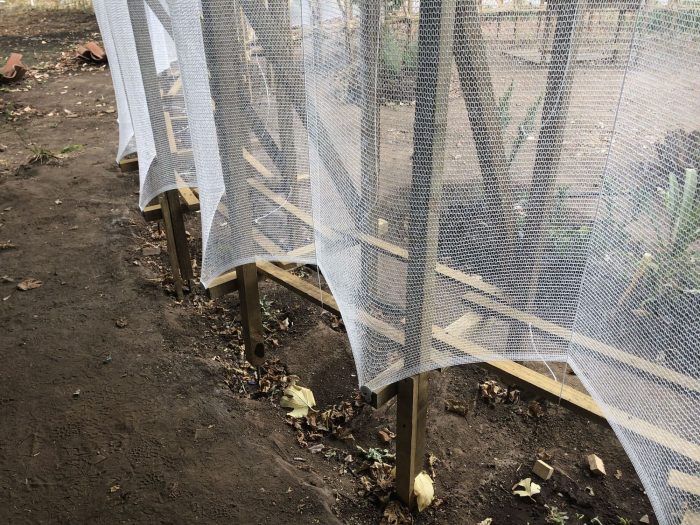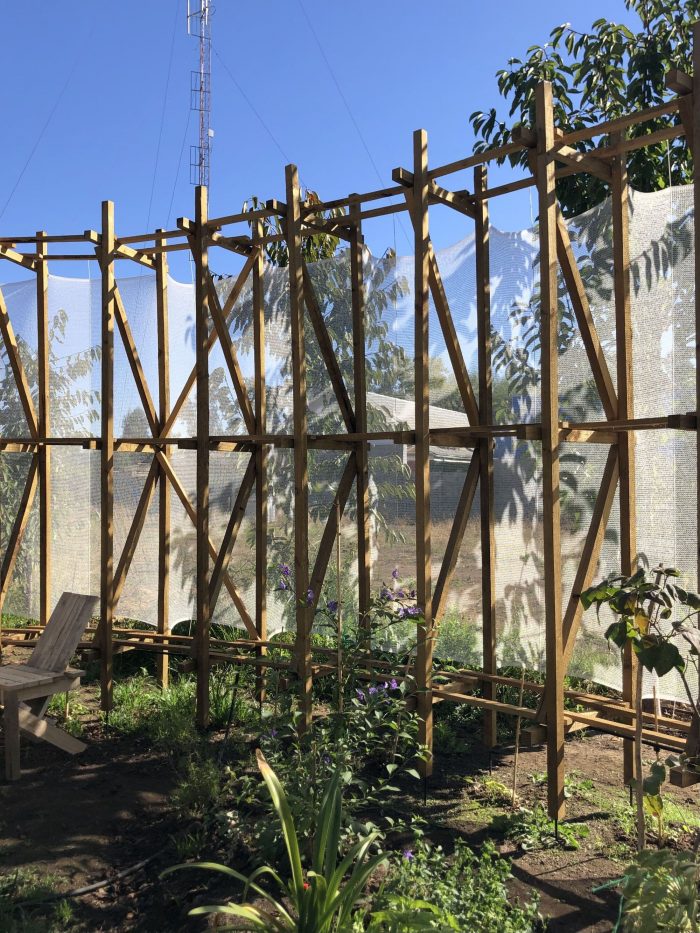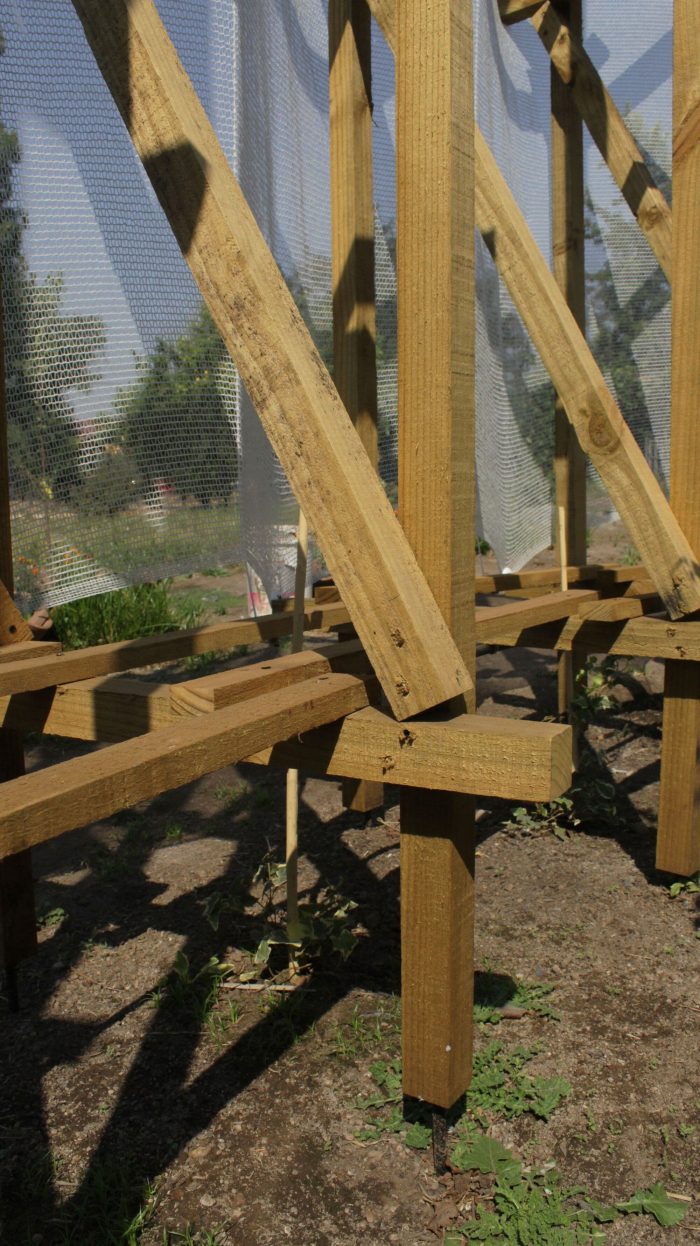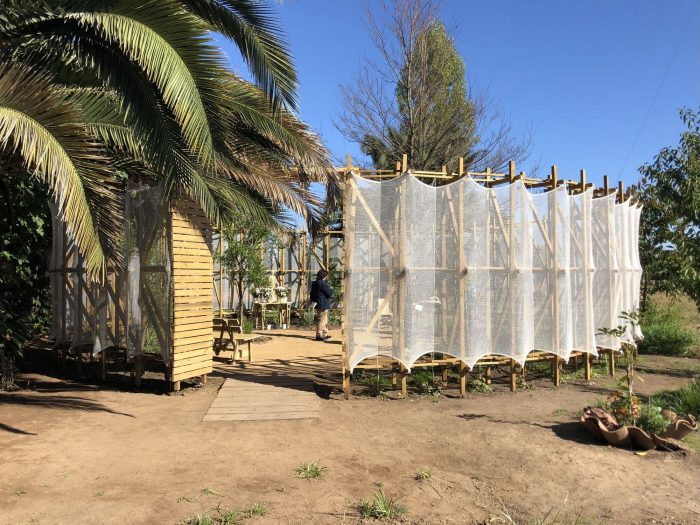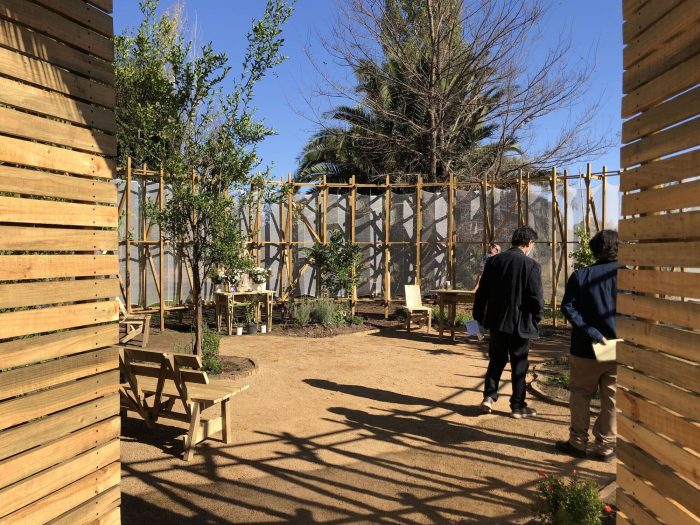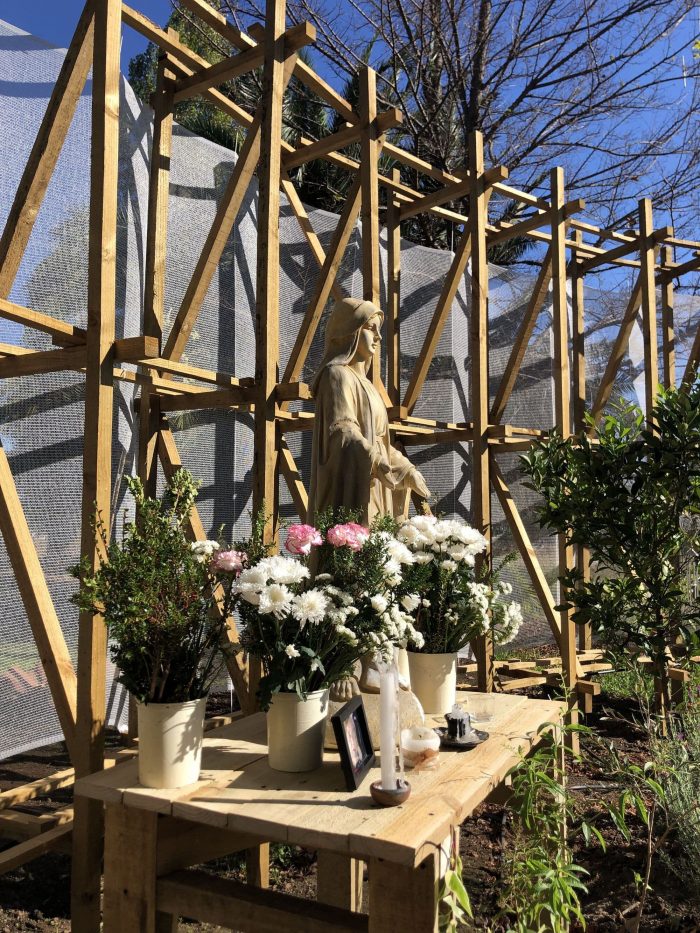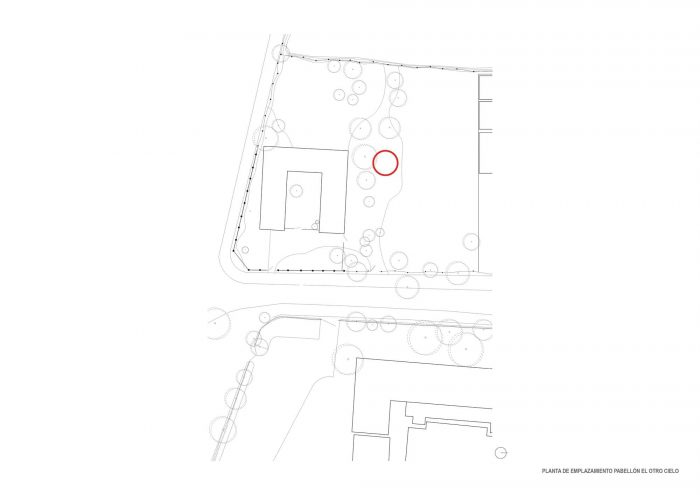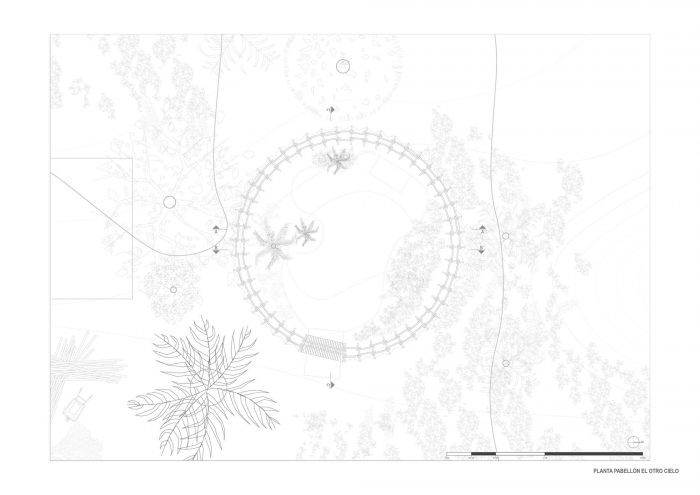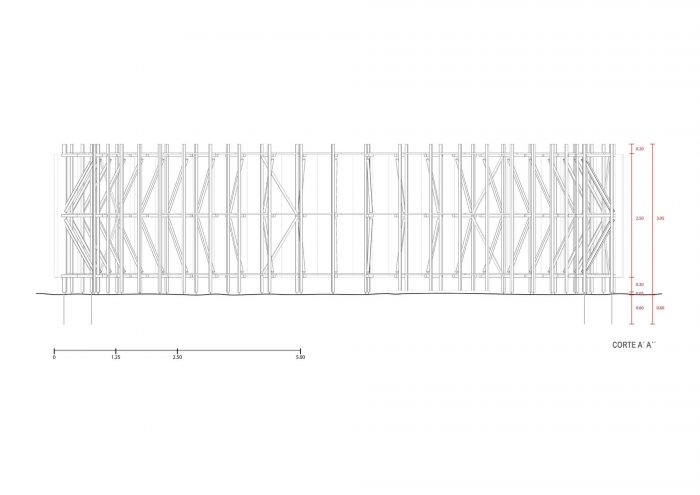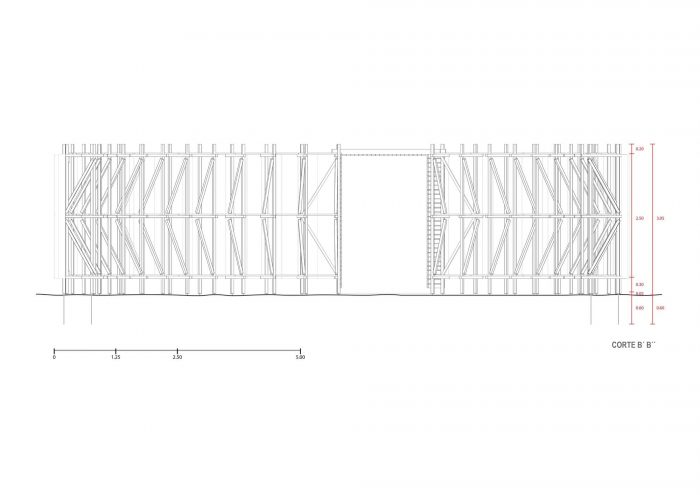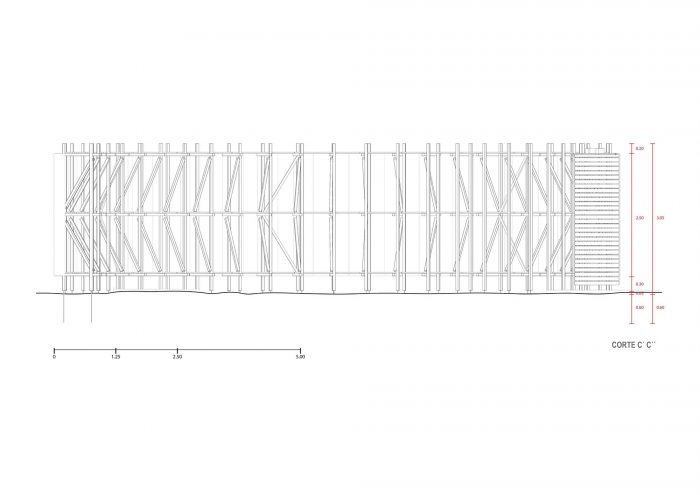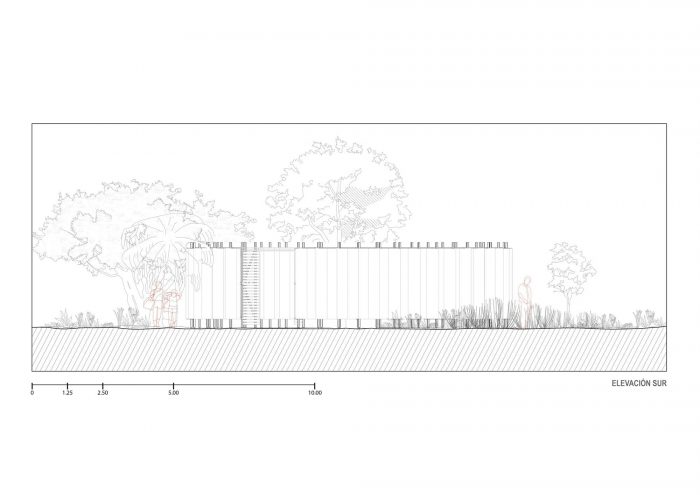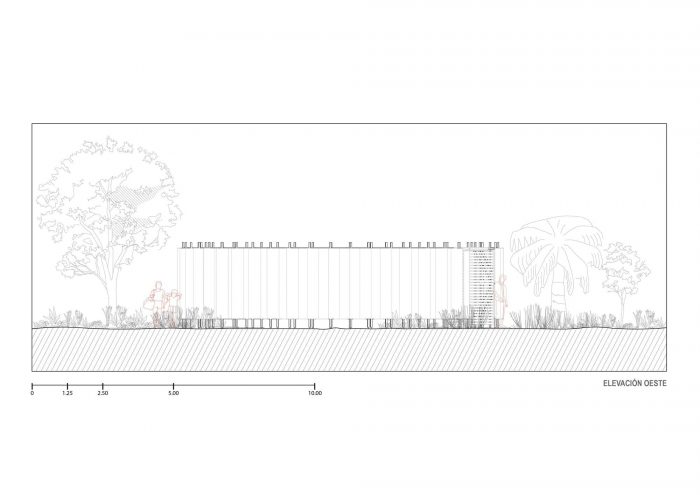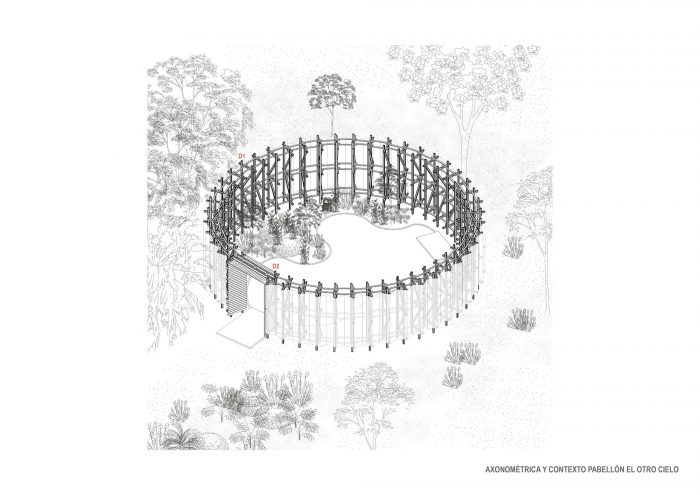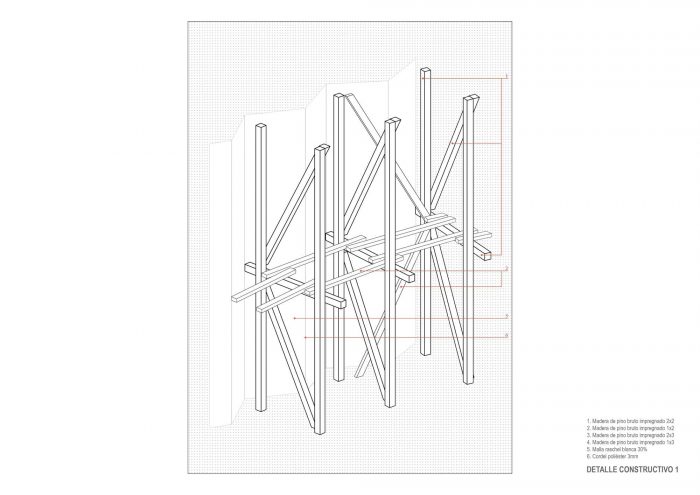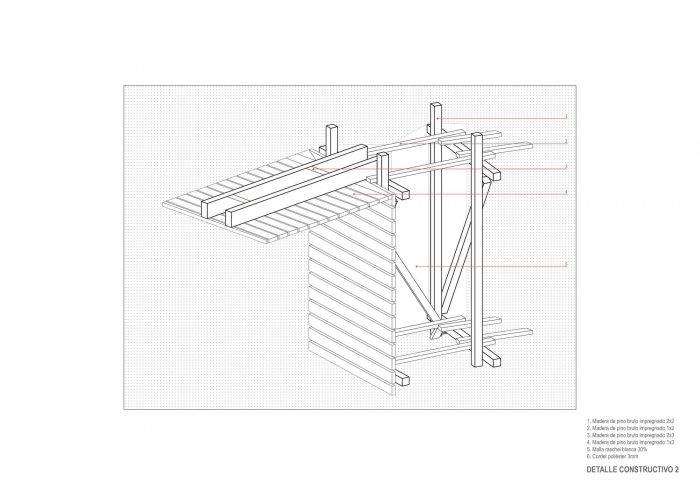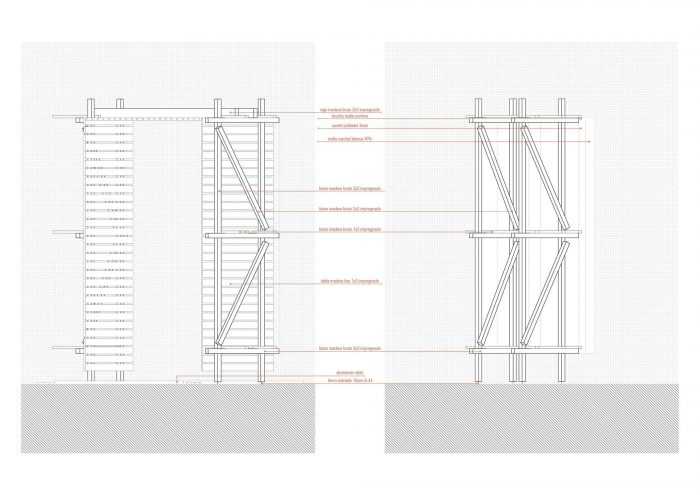El Otro Cielo是一个亭子,位于智利Maule地区的Santa Amalia del Sauce宗教团体所属的一个古老的天主教寺庙的侧面天井。该提案是作为应对19号硫化物造成的健康紧急情况的临时援助措施而安装的。它由一个直径为10米的圆形结构组成,其中包含一个小花园,里面有新的植物品种。
El Otro Cielo is a pavilion on the side patio of an old Catholic temple belonging to the religious community of Santa Amalia del Sauce, in the Maule Region, Chile. The proposal is installed as a temporary aid responding to the health emergency caused by covid 19. It consists of a circular structure of 10 meters in diameter that contains a small garden that incorporates new plant species.
这个新的空间允许支持教区的集体活动,并作为一个与安静和自然联系的地方。通过其高度,该项目与教堂的内部氛围形成对比,因为亭子在户外,与天空有视觉联系。
This new space allows the support of the collective activities of the parish and serves as a place to connect with silence and nature. Through its height, the project contrasts with the interior atmosphere of the church since the pavilion is outdoors and has a visual connection with the sky.
亭子的周边是由一个精致的木质结构组成,上面覆盖着白色的拉舍尔网。每一个2×2英寸的原松木框架通过注入地面以下70厘米的槽形铁桩安放在自然地面上。这个解决方案避免了地基的建设,大大减少了预算。该馆的形式表达力求突出结构是建筑的最终结果,避免使用涂料来掩盖木材在追求稳定和审美和谐过程中所表现出的力量和行为。
The perimeter of the pavilion is made up of a delicate wooden structure covered with white raschel mesh. Each 2×2 inch raw pine wood frame rests on the natural ground by means of grooved iron stakes injected 70 cm below the ground. This solution avoids the construction of foundations, significantly reducing the budget. The formal expression of the pavilion seeks to highlight the structure as the final result of the architecture, avoiding the use of coatings that hide the forces and behavior that wood performs in its quest to achieve stability and aesthetic harmony.
该项目是一个建设性的宣言,介绍了在木材基础上构思低成本、高影响力的建筑的可能性。该项目认识到Maulino农村景观的典型材料文化,重视当地的建筑系统;如棚屋、温室和木制鸡舍。
The project is a constructive manifesto that introduces the possibility of conceiving a low-cost, high-impact architecture based on wood. The project recognizes a material culture typical of the Maulino rural landscape, valuing local construction systems; such as sheds, greenhouses, and wooden chicken coops.
最后,该作品提供了一种沉思和学习当地植被的经验。它的周边结构在灌溉系统的帮助下,加上攀缘常春藤的分布,试图将自然作为建筑的一部分,提出随着时间的推移,用植物的衣钵取代拉舍尔网,从而实现有控制的淘汰,从长远来看,将覆盖整个结构。
Finally, the work offers an experience of contemplation and learning about the vegetation of the place. Its perimeter structure assisted by an irrigation system together with the distribution of climbing ivy seeks to integrate nature as part of the building, proposing a controlled obsolescence over time from the replacement of the raschel mesh by a plant mantle that in the long term will cover the whole structure.
Architects: Diego Villarroel
Area : 78 m²
Year : 2022
Photographs :Victor Letelier, Diego Villarroel
Lead Architect : Diego Villarroel Rojas
Tutor Professor : Victor Letelier
Structural Engineer : Luis Zamora
City : Talca
Country : Chile

